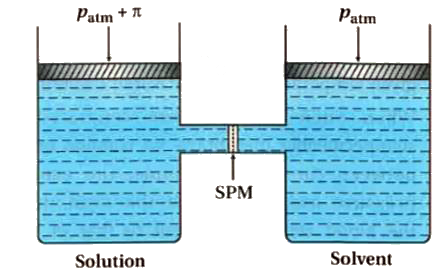InterviewSolution
Saved Bookmarks
| 1. |
What is osmotic pressure ? Explain and derive equation. |
|
Answer» Solution :The flow of the solvent from its side to solution side across a semipermeable membrane can be stopped if some extra pressure is applied on the solution. This pressure that just stops the flow of solvent is CALLED osmotic pressure `(pi)` of the solution. In SHORT, the pressure which stops the spontaneous flow of solvent is known as osmotic pressure `(pi)` of the solution. The flow of solvent from dilute solution to the concentrated solution across a semipermeable membrane is due to osmosis. The important point to be kept in MIND is that solvent molecules always flow from lower concentration to higher concentration of solution. The osmotic pressure has been found to depend on the concentration of the solution.  Osmotic pressure is a colligative property as it depends on the number of solute molecules and not on their identity. For dilute solutions, osmotic pressure is proportional to the molarity, C of the solution at a given temperature T. Thus , `therefore pi = " CRT" therefore pi = (n_(2))/(V)RT` Here, `pi` is the osmotic pressure, R is the gas constant and V is the VOLUME of solution. V is volume of a solution in litres containing `n_(2)` moles of solute. If `w_(2)` grams of solute, of molar MASS, `M_(2)` is present in the solution, then `n_(2)=(w_(2))/(M_(2))` `therefore pi V=(w_(2)RT)/(M_(2))` Thus, knowing the quantities `w_(2), T pi` and V we can calculate the molar mass of the solute. |
|